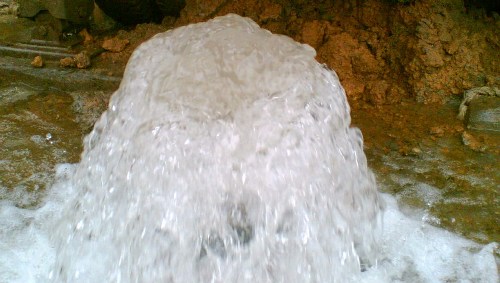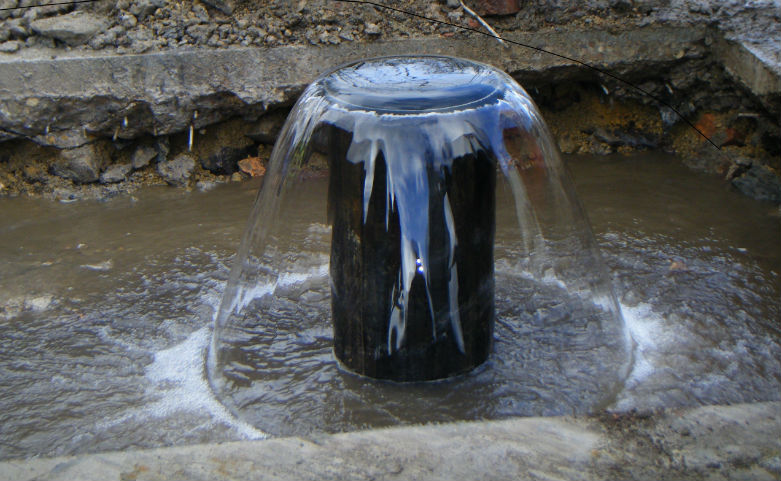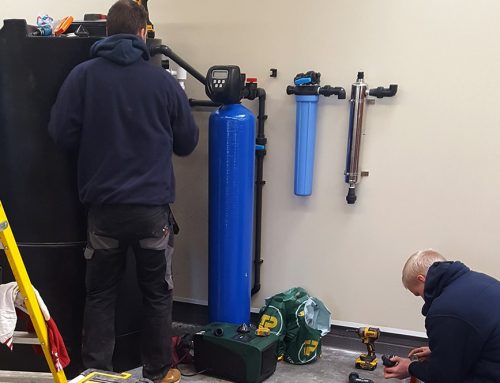When researching a borehole for your property or business you might have come across the term Artesian Well, but what does it actually mean and how is it different?
Firstly, artesian groundwater is the same as any other type of groundwater the only difference is how it gets to the surface.
An artesian well is simply a well that doesn’t require a pump to bring water to the surface; this occurs when there is enough pressure in the aquifer. The pressure forces the water to the surface without any sort of assistance.

A Free Flowing Artesian Borehole
An aquifer is a geologic layer of permeable and porous rock such as sandstone or limestone and that provides the water source for the artesian well.
The aquifer absorbs and stores water and in an artesian well the porous stone is sandwiched between a top and bottom layer of impermeable rock such as shale or clay. This causes positive pressure.
Video of an Artesian Well
The video below is an example of a free flowing artesian head borehole. Here one of our drilling rigs has tapped into the aquifer and the pressure is causing the water to escape at around 80m3 per hour.
When an artesian well is drilled the pressure is relieved and the water is able to find a path to open air, in many cases the pressure is high enough to bring the water all the way to the surface and that’s known as a flowing artesian well.
Natural springs also form in this exact same way when a gap is formed in the impermeable rock e.g. by an earthquake and releases the pressure, allowing the water to flow up. In some cases if the pressure is high it will form a fountain called a geyser.
Where did Artesian Wells Originate?
The first Artesian well on record was drilled in 1126 by a group of Monks in the French province of Artois, hence the name Artesian well.
Back then they didn’t have the luxury of a fully operation drilling rig like we use today and the aquifer was reached by brute force and a sharp rod known as a bore. The percussive drilling technique they used eventually broke through the rock and the water rose to the surface. Because it had seeped through many layers of porous rock in the aquifer many of the contaminants had been filtered out, providing a much safer and cleaner form of drinking water when compared with surface or river water.



